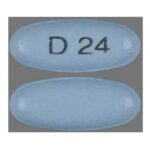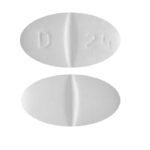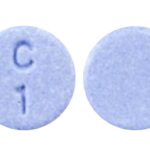Blue Dolphin Pills: Uses, Side Effects, Warnings

Blue dolphin pills with a dolphin logo is a type of ecstasy that contains MDMA (Molly) or 3,4-methylenedioxy-methamphetamine, a synthetic drug that alters mood and perception (awareness of surrounding objects and conditions). It is chemically similar to both stimulants and hallucinogens, producing feelings of increased energy, pleasure, emotional warmth, and distorted sensory and time perception. MDMA was initially popular in the nightclub scene and at all-night dance parties (“raves”), but the drug now affects a broader range of people.
Studies have reported that MDMA increases sexual arousal and some people (gay and bisexual females) use drugs like the Blue dolphin pill specifically for sexual enhancement. Sexual risk-taking (e.g., having multiple partners, engaging in sex without a condom) is common among users. People who have a sex addiction frequently turn to drugs, such as Blue dolphin pill, to soothe emotional pain.
On a global scale, the blue pill stamped with a dolphin emblem is the most prevalent ecstasy tablet according to survey data. Its popularity likely inspired a spinoff tablet featuring the same image in yellow, also featured on this list.
The key Blue Dolphin X characteristics are:
- Size – approximately 9 mm x 4 mm
- Weight – 350-390 mg
- Flat on top, domed at the bottom
- Round shape with a pressed dolphin logo
- Crumble, powdery, chalky texture
- Light blue with a lot of visible specs
Blue Dolphin Molly has been ranked as one of the most popular Xs in the world. The cost of Blue Dolphin pills ranges from $12 to $17.
What are the side effects of Blue dolphin pills?
For some people, this illicit drug Blue dolphin pills can be addictive. A survey of young adult and adolescent users found that 43% met the accepted diagnostic criteria for dependence, as evidenced by continued use despite knowledge of physical or psychological harm, withdrawal effects, and tolerance (or diminished response), and 34% met the criteria for drug abuse.
Almost 60% of people who use ecstasy report withdrawal symptoms, including:
- fatigue
- loss of appetite
- depressed feelings
- trouble concentrating.
Research in animals indicates that Blue dolphin pills are neurotoxic; whether or not this is also true in humans is under investigation. Its effect on cognition and memory is a concern. The drug can also be lethal on rare occasions.
Chronic users of Blue dolphin pills perform more poorly than nonusers on certain types of cognitive or memory tasks. Some of these effects may be due to the use of other drugs in combination with ecstasy, among other factors. Research indicates heavy Blue dolphin pills use may cause persistent memory problems in humans, although studies are conflicting.
Physical Effects:
• In high doses, Blue dolphin pills can interfere with the body’s ability to regulate temperature. On rare but unpredictable occasions, this can lead to a sharp increase in body temperature (hyperthermia), resulting in liver, kidney, and cardiovascular system failure, and death.
• Because it can interfere with its own metabolism (breakdown within the body), potentially harmful levels can be reached by repeated drug use within short intervals.
• Users face many of the same risks as users of other stimulants such as cocaine and amphetamines. These include increases in heart rate and blood pressure, a special risk for people with circulatory problems or heart disease, and other symptoms such as muscle tension, involuntary teeth clenching, nausea, blurred vision, faintness, and chills or sweating.
Psychological Effects:
• Psychological effects can include confusion, depression, sleep problems, drug craving, and severe anxiety. These problems can occur during and for days or weeks after taking ecstasy.
Neurotoxicity:
• Research in animals links ecstasy exposure to long-term damage in neurons that are involved in mood, thinking, and judgment. A study in nonhuman primates showed that exposure to the compound for only 4 days caused damage to serotonin nerve terminals that was evident 6 to 7 years later.
• While similar neurotoxicity has not been definitively shown in humans, the wealth of animal research on damaging properties suggests that the chemical is not a safe drug for human consumption.
Hidden Risks and Contaminants:
• Other drugs chemically similar to Blue dolphin pills, such as MDA (methylenedioxyamphetamine, the parent drug of ecstasy) and PMA (paramethoxyamphetamine, associated with fatalities in the U.S. and Australia) are sometimes sold as ecstasy. These drugs can be neurotoxic or create additional health risks to the user.
• Blue dolphin tablets may be further contaminated with other substances in addition to MDMA, such as ephedrine (a stimulant); dextromethorphan (DXM, a cough suppressant that has PCP-like effects at high doses); ketamine (an anesthetic used mostly by veterinarians that also has PCP-like effects); caffeine; cocaine; and methamphetamine.
• While the use of this agent by itself or with one or more of these drugs may be inherently dangerous, users might also unknowingly combine them with substances such as marijuana and alcohol, putting themselves at further physical risk.





